The name "Pazhuvur" is derived from the Tamil word 'Pazhu', which refers to the majestic banyan tree that serves as the 'sthala vruksham' or sacred tree of the temple in this town. Pazhuvur is divided into two distinct portions known as 'Mela Pazhuvur' and 'Keezha Pazhuvur', with this Paadal Petra Shivasthalam situated in the latter section. Upon approaching the temple, visitors are greeted by a modest entrance that leads to an impressive three-tiered 'gopuram' or tower gateway. Flanking either side of the entrance are statues of Nandi Devar, the sacred bull vahana of Lord Shiva. As one crosses the threshold and enters through the gopuram gateway, the traditional trio of sacred structures - the dwajsthambam or flag post, altar, and Nandi - come into view. To the right of these stands the separate sannidhi dedicated to the temple's female deity, encircled by a circumambulatory path for devotees to perform pradakshina. The goddess here is worshipped as 'SriyogaTapasvini' or 'Arun-Thava-Nayaki' in Tamil, depicting her in a standing posture. She is venerated as a Maha-Tapaswini, the supreme female ascetic, granting boons of both asceticism and matrimony to devotees seeking these contrasting aspects of life. Tirupazhuvur is also regarded as a 'Yoga Vanam' or forest of spiritual practices, as it was here at the very beginning of creation that Goddess Parvathy, the 'Akilanda Nayaki' or universal goddess, performed her cosmic tapas or ascetic meditation.
The gateway from the open courtyard, or prakaram, leads to the Maha Mandap, a spacious and ornately decorated hall that serves as the main entrance to the inner sanctum of the temple. Flanking either side of the Maha Mandap are broad passageways that guide devotees to the inner prakaram, a circumambulatory path that encircles the garbhagriha, or sanctum, where the presiding deity resides. Before entering the sanctum, one's gaze is drawn upward to a breathtaking sculpture of Mahavishnu, depicted in his iconic reclining pose, serenely watching over all who pass beneath him into the sacred space. At the heart of the sanctum lies the Shiva Linga of Sri Vada-Moola Nathar, a one-of-a-kind Linga fashioned from the sands of a snake-pit, its delicate nature protected within a pot-like covering known as a 'kuvalai'. To the right of the in-between Mandap lies a spot of great spiritual significance, marked by the presence of 'Thavasamman', where Goddess Parvathy is said to have performed her tapas, or spiritual austerities. As one circumambulates the sanctum, a series of sannidhis, dedicated to various deities and spiritual figures come into view, including the Saptha Rishis, Umai Bangar, Saptha Matha, Kasi Viswanathar, Visalakshi, Pancha bhootha Lingas, GajaLakshmi, Kala-Samhaara Murthy, and Gaja-Samhara Murthy. The temple's pantheon is further enriched by the presence of 'Goshta Murthas', a group of five deities consisting of Vinayaka, Dakshinamurthy, LingothBhava, Brahma, and Goddess Durga.
A majestic, sprawling banyan tree, revered as the temple's 'sthala vruksham' or sacred tree, stands sentinel outside the temple. The temple's sanctity is further enhanced by the presence of two bodies of water - the Brahma Theertham tank and the meandering river Kollidam, which serve as the 'sthala theertham' or temple tank and river. Legend holds that this sacred site bore witness to the penance of Parashuram, the sixth avatar of MahaVishnu, as he sought to atone for the grave sin of matricide committed at the behest of his father, the sage Jamadagni. Interestingly, the neighboring hamlet of Mela-Pazhuvur houses another Shiva temple wherein resides an idol of Parashuram's father Jamadagni himself. The filial connection between the two temple sites is celebrated annually during the auspicious Tamil month of Panguni, when, on the third day of the festival, the deity of Pazhuvur is ceremoniously transported in a grand procession to Mela-Pazhuvur to be symbolically presented before the paternal figure of Jamadagni.
The Keezh-Pazhuvur temple stands as a testament to the rich history and heritage of the Chola dynasty, with stone slabs bearing inscriptions that chronicle the entire hereditary lineage of this powerful South Indian empire. The presence of such detailed genealogical records suggests that the Keezha-Pazhuvur temple held a position of great prominence and significance during the Chola period. Interestingly, the temple at Mela-Pazhuvur contains information about the lineage of the Chera dynasty, which was bound to the Cholas through matrimonial alliances. The Cheras brought with them priests who were fluent in Malayalam to perform the daily rituals and ceremonies for the temple deity. These Malayalam-speaking priests who migrated to Mela-Pazhuvur settled there permanently, establishing a distinctive community within the region. The renowned Tamil Shaivite poet-saint Tirugnanasambandar, who lived in the 7th century CE, makes a reference to these migrant priests in his hymns, attesting to their presence and role in the temple's religious activities. The Pazhuvur temples, with its wealth of epigraphic evidence offers valuable insights into the complex dynastic relationships, cultural exchanges, and religious practices that shaped the history of South India during the Chola era.
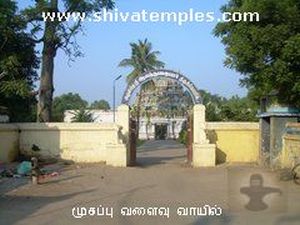 Entrance
Entrance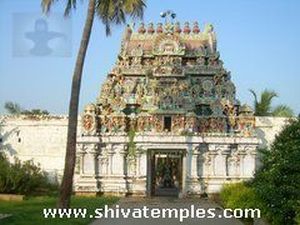 3 tiered Gopuram
3 tiered Gopuram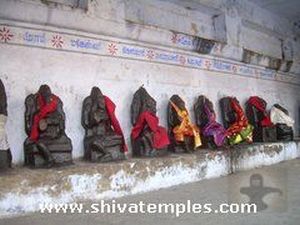 Saptha Matha
Saptha Matha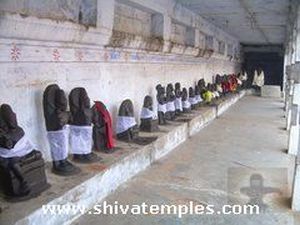 Idols in the Prakaram
Idols in the Prakaram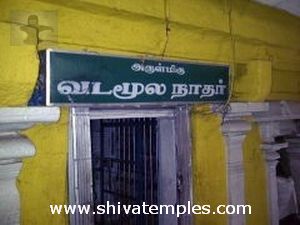 VadaMoolaNathar Sannidhi
VadaMoolaNathar Sannidhi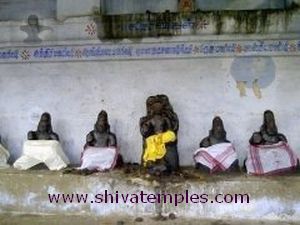 Sages Athiri, Aangeerasa, Brugu, Pulasthya, with Dakshinamurthy in the middle.
Sages Athiri, Aangeerasa, Brugu, Pulasthya, with Dakshinamurthy in the middle.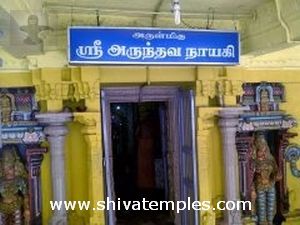 Goddess Sannidhi
Goddess Sannidhi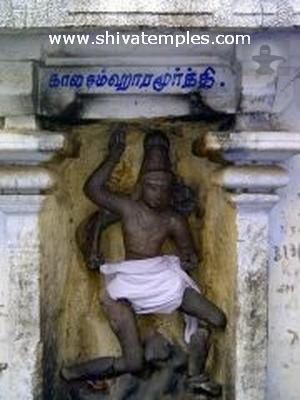 Kaal Samhaara Murthy
Kaal Samhaara Murthy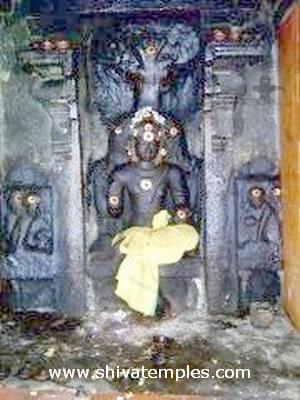 Dakshinamurthy
Dakshinamurthy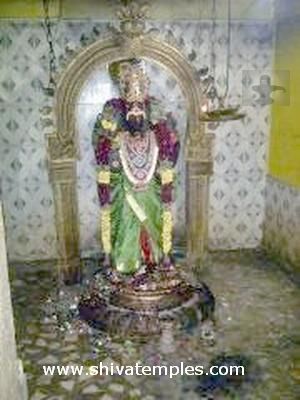 Sri Yoga Tapaswini
Sri Yoga Tapaswini